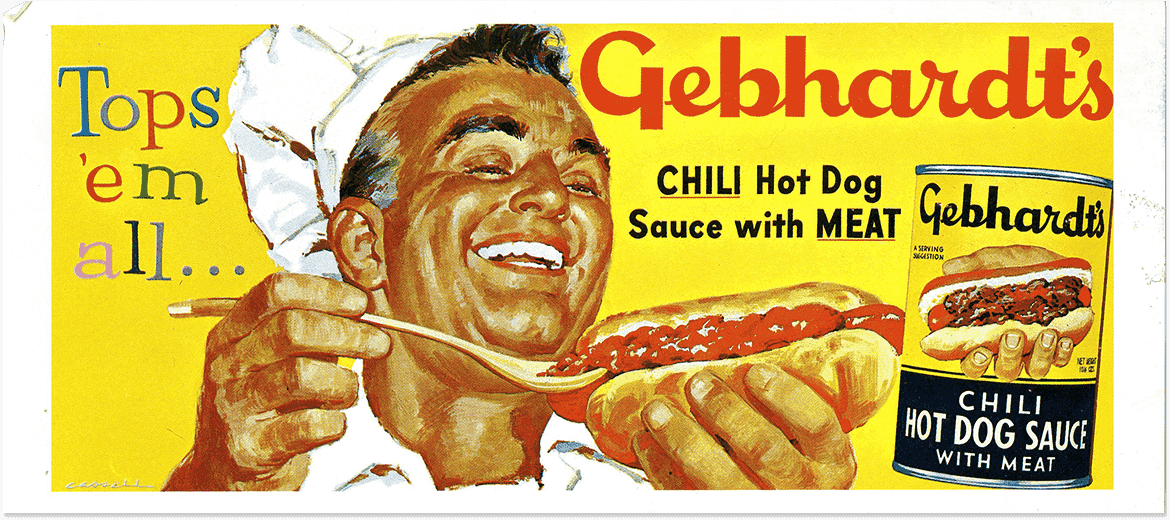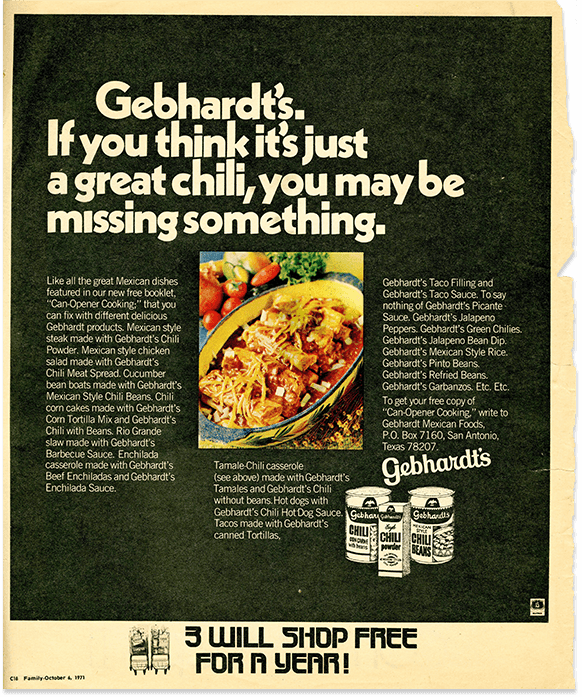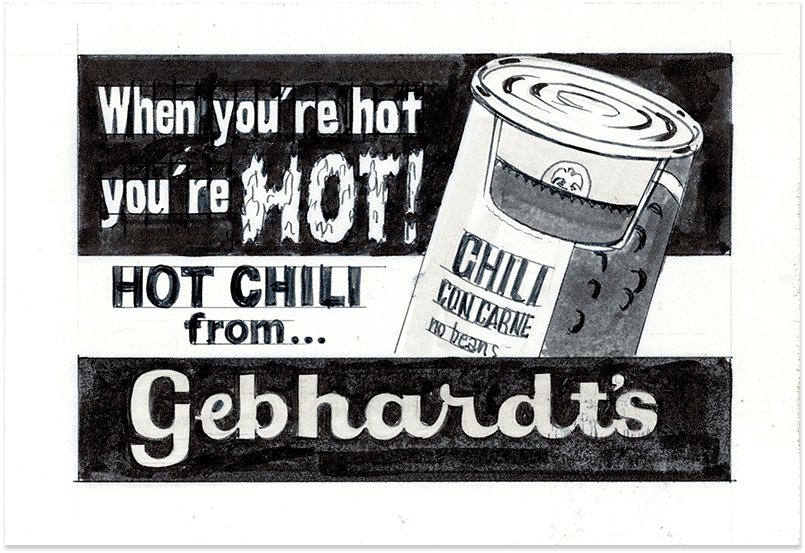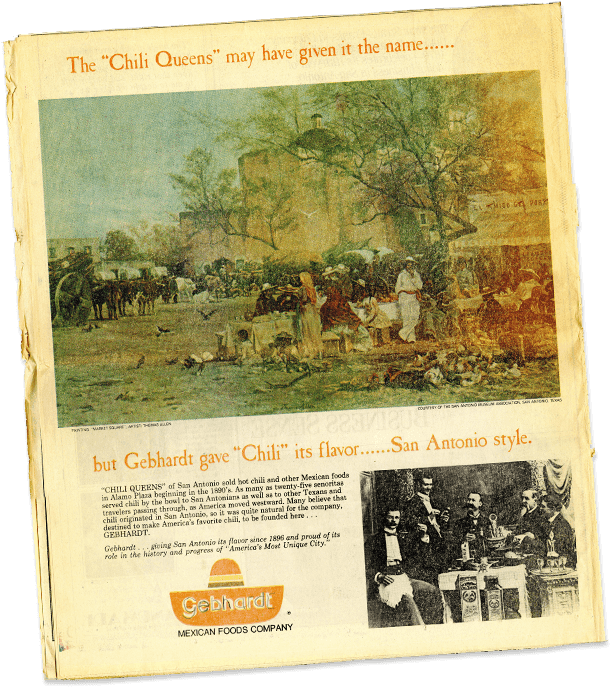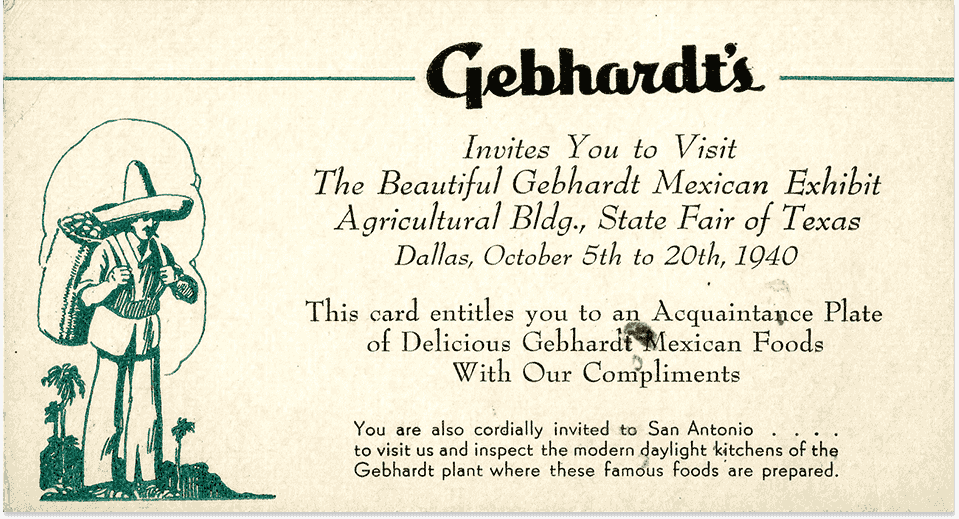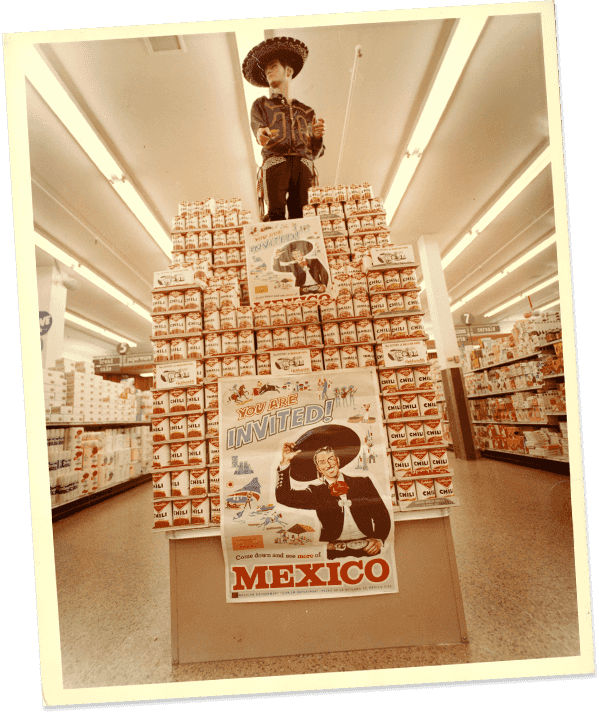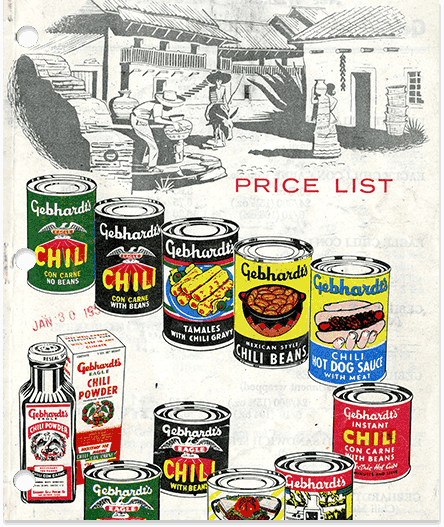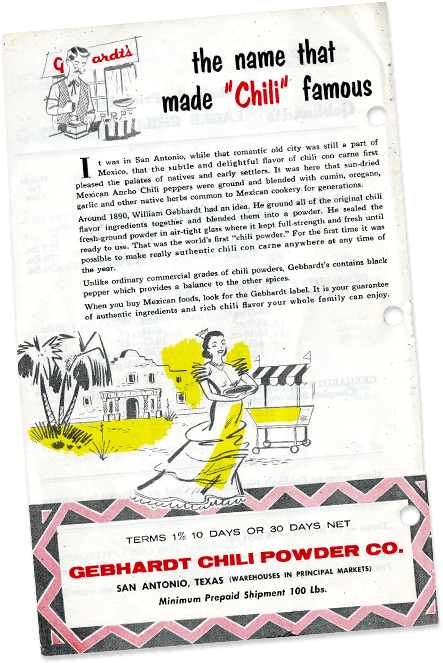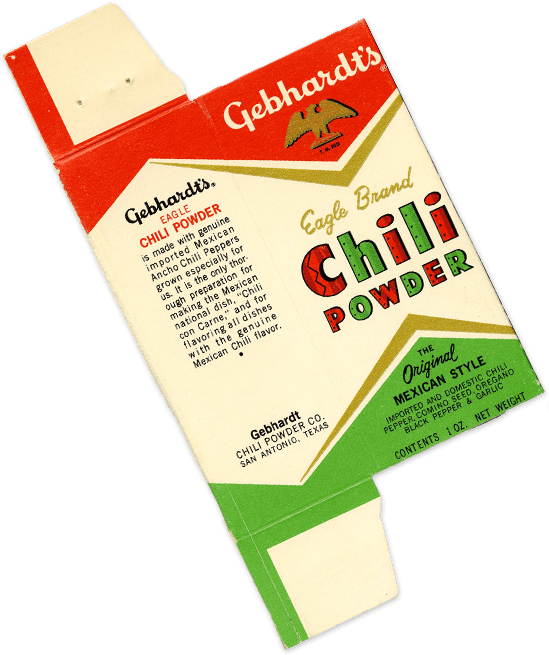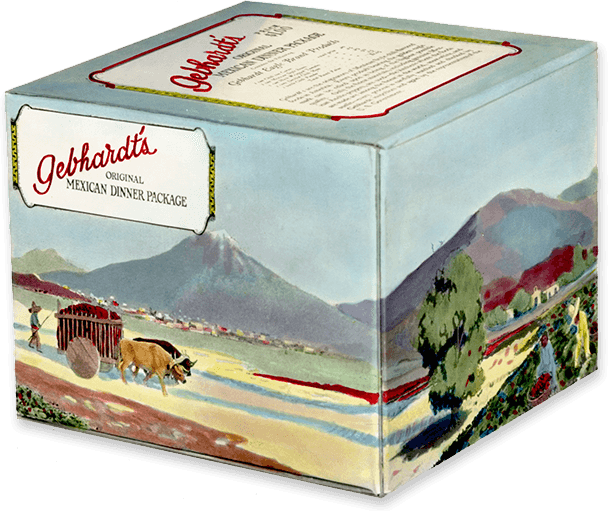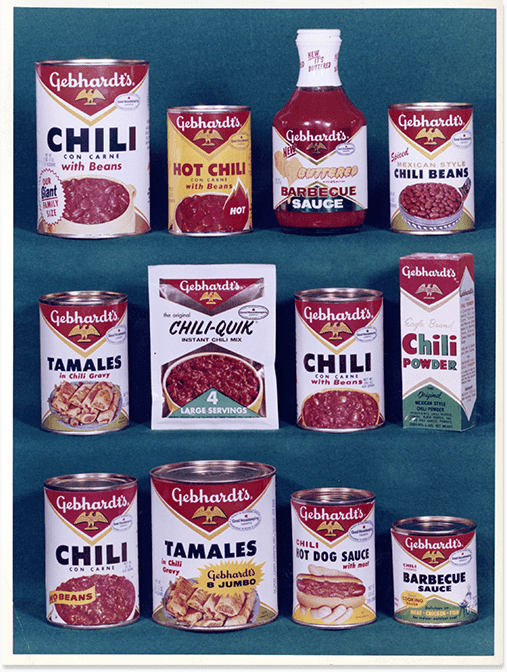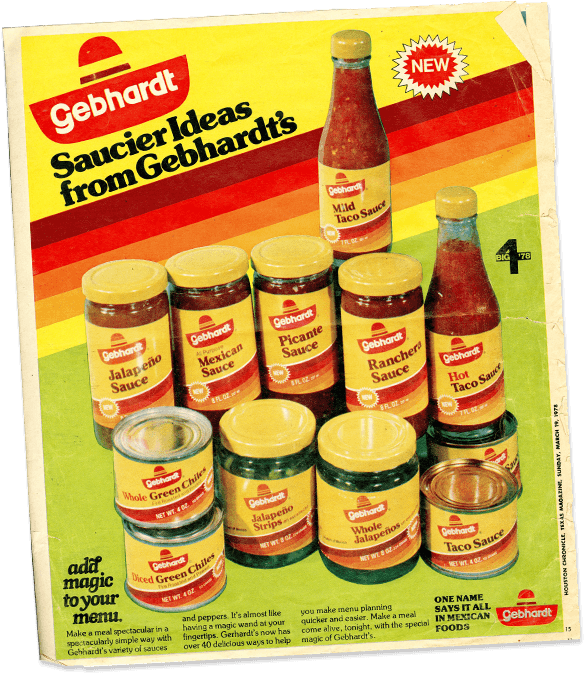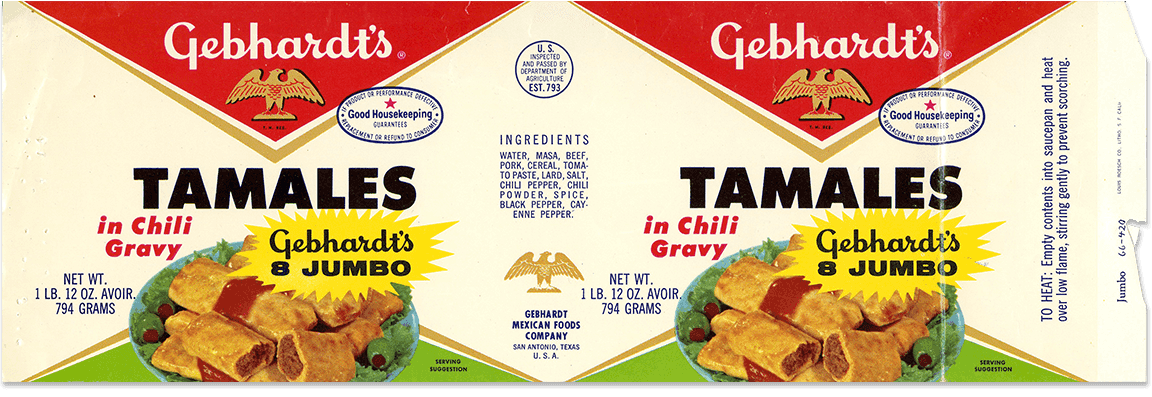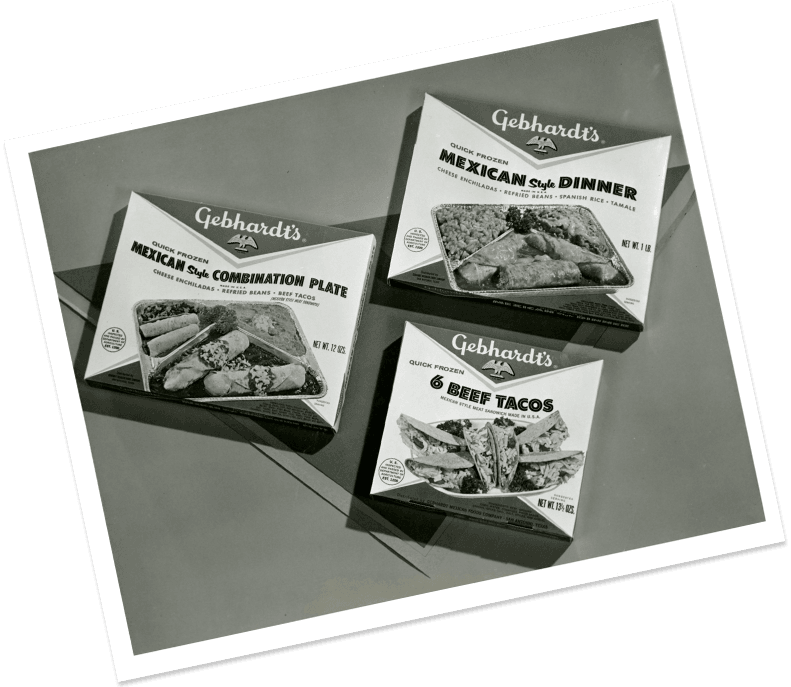When William Gebhardt began experimenting with grinding herbs and dried peppers, he probably didn’t imagine his concoction would become a staple used in Mexican dishes nationwide, giving people a kick on the tongue for years to come.
Born in 1875 in Germany, Gebhardt immigrated with his family to the United States in 1883 and settled in New Braunfels, Texas, a couple years later. He loved to cook, and in 1892 opened his first café in the back of a saloon. He reportedly became infatuated with Mexican food after regular visits to San Antonio, thirty miles to the south.
He decided to invest in his future. He wrote to Mexico and ordered a whole wagonload of ancho peppers to be delivered to New Braunfels. … Willy had a dream. He wasn’t content to just serve his regular customers his new recipes, even though they were beating a path to his door. He thought bigger than that. He wanted everyone to enjoy chili anytime they wanted."– The Gebhardt Story of Mexican Food
Gebhardt didn’t stop at chili powder.
In 1911, Gebhardt received a butcher’s license and began expanding his product line to include canned chili con carne and tamales. By then, the company had been renamed Gebhardt’s Chili Powder Company.
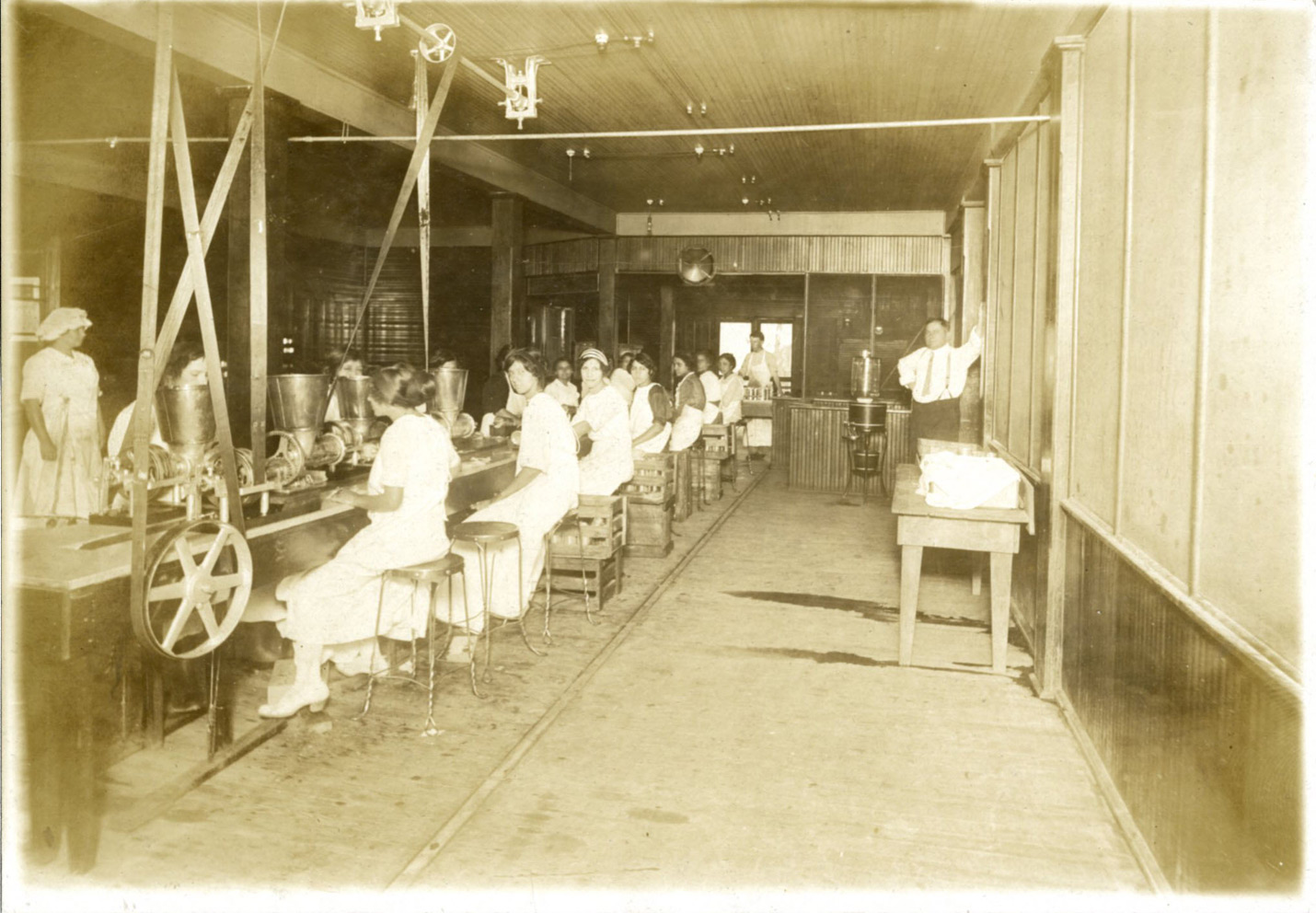
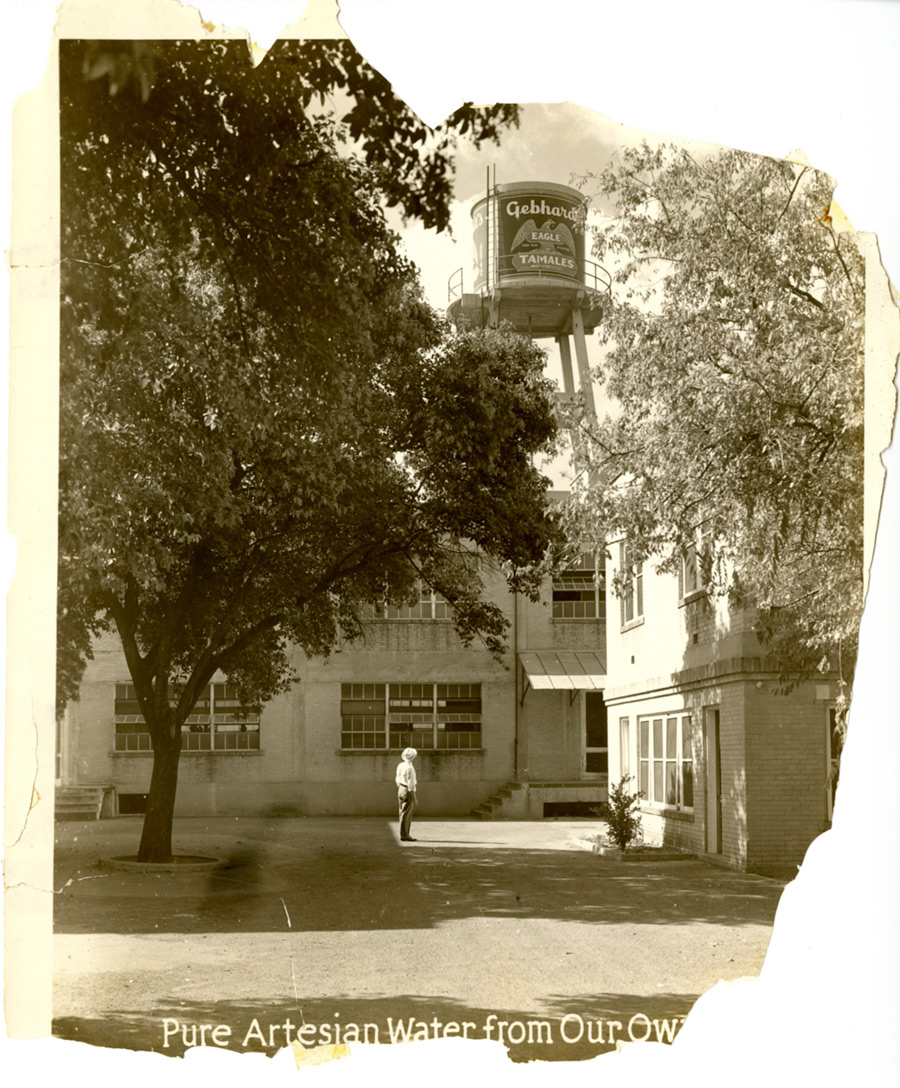
Although not the first to sell chili con carne, Gebhardt was the first to make a large-scale business of it. A Texan reportedly tried to develop a market for canned goat-meat chili in the 1870s, and the Chili Queens of San Antonio sold the homemade stew at plazas from the 1860s to the late 1930s.
Gebhardt’s manufacturing operation continued to grow, and the company published more cookbooks to promote later products like canned chili, canned beans, deviled sandwich spread and Mexican dinners-in-a-box.
View Slideshow >>While the Gebhardt cookbooks describe the recipes as “real” Mexican cooking, it’s not likely that Mexicans would recognize many of the dishes. Recipes include piquant deviled eggs, hominy and chili scramble, and beans in tomato cups.
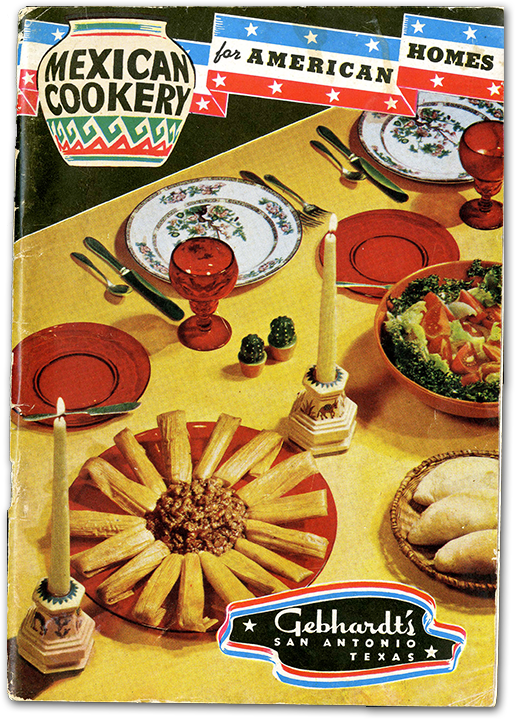
Employees at the manufacturing plants recalled doing everything by hand during the early years - rolling tamales, applying labels, and stacking cans.
In the beginning there was not always enough business to keep the lines running full time. Some weeks we’d only work 3 or 4 days, sometimes we’d work only half a day. I can remember working some mornings and then going to the movies in the afternoon. I only made 43 cents an hour in those days, but the money seemed to go further."– Estefana Morales, recalling memories of working for Gebhardt’s in the 1940s, as quoted in a 1987 issue of Horizons magazine, a company publication
The company marketed its products on radio commercials, and newspaper and magazine advertisements. The brand packaging was bright and colorful, and ads typically featured animated drawings and catchy slogans and blurbs.
View Slideshow >>Corporate Ownership
Gebhardt’s. If you think it’s just a great chili, you might be missing something.
— Gebhardt Mexican Foods Company advertisementWilliam Gebhardt died at the age of 81 in 1956, 20 years after retiring from active business.
In 1960, Gebhardt’s Chili Powder Company became an independent division of Chicago-based Beatrice Food Company, which also operated Rosarita Mexican Food Company and La Choy Food Products Company. This acquisition allowed for increased national marketing.
Gebhardt Media
View an original Gebhardt television commercial or listen to a radio ad in English or Spanish.
English Radio Ad
Spanish Radio Ad
In the 1980’s, the Gebhardt plant was modernized and expanded to include more than 115,000 square feet on 3.6 acres. The plant had a boiler, canning plant and two warehouses.
Gebhardt’s product line expanded to include taco shells, enchiladas, sauces, dips, peppers and spices. The Gebhardt name became synonymous with packaged Mexican food.
By 1984, the company was renamed Gebhardt Mexican Foods Company and it had grown to five times its size before the merger. Beatrice was then acquired by Kohlburg, Kravis and Roberts, and became part of the Beatrice/Hunt-Wesson division.
Sales increased in California, Arizona, Oregon and Washington, but more than 60 percent of all profits were still from Texas. Mexican food sections in grocery stores — often featuring Gebhardt products — grew in popularity.
In 1990, ConAgra Incorporated, a food production company headquartered in Omaha, Neb., bought Beatrice/Hunt Wesson. By 1997, Gebhardt Mexican Foods was part of Hunt Foods, a division within the corporation.
Although corporate ownership has de-emphasized the Gebhardt brand, a few products can still be found in some grocery stores today, including H.E.B., a supermarket in Texas and Mexico.
William Gebhardt’s experiments grinding herbs and dried peppers eventually led to new culinary traditions for families across the nation. Today, chili powder is one of the most common seasonings found in American homes.
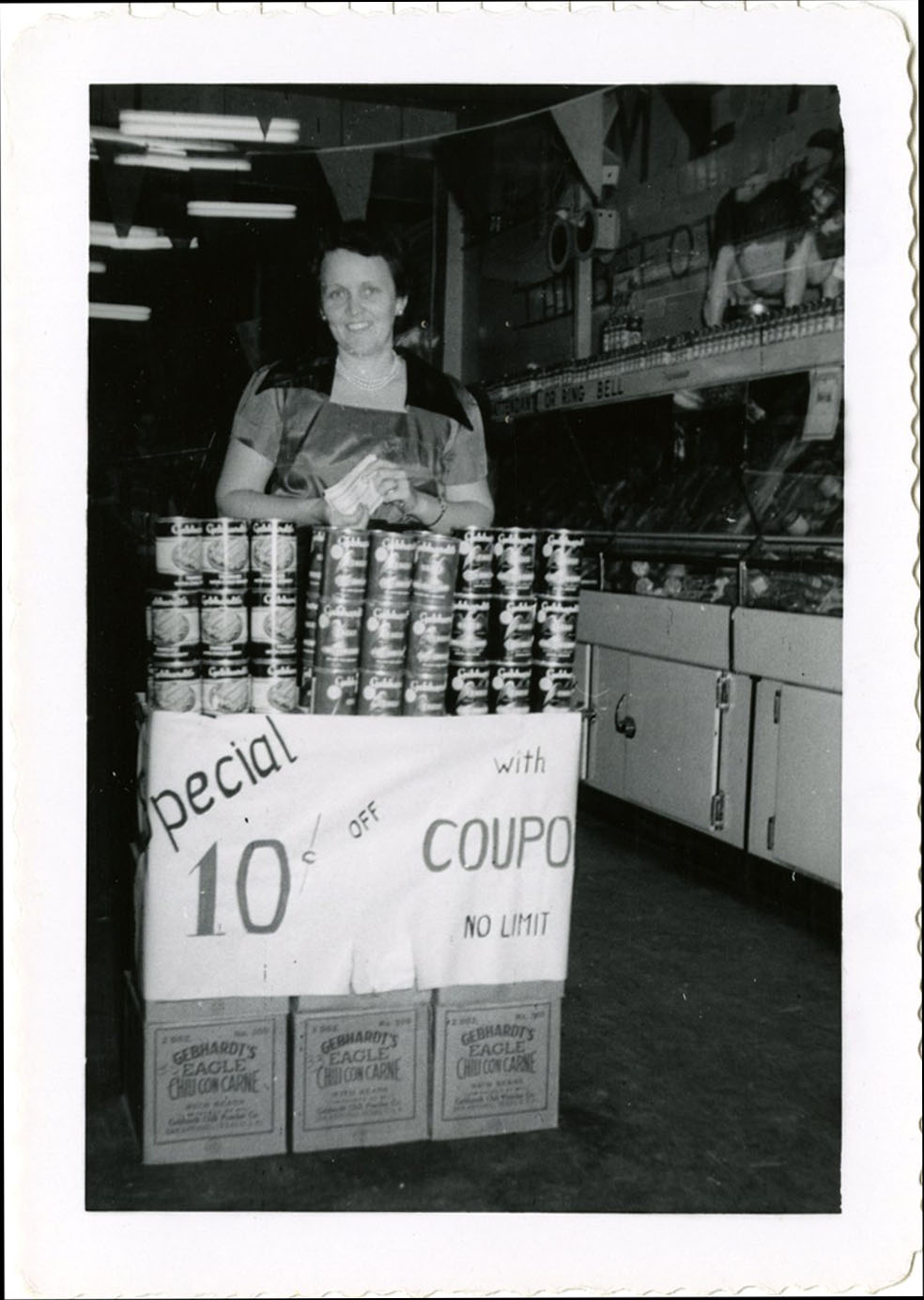
I am 80 years old, have been married 54 years and have used Gebhardt’s Chili Powder ever since I learned to cook. ... My grandmother owned and operated a boarding hotel in Richmond, Calif., and did all the cooking for the same. Her chili con carne was a popular and famous dish among her boarders. That was in World War I years."- M.T. Humphreys (customer letter written in June 1988)
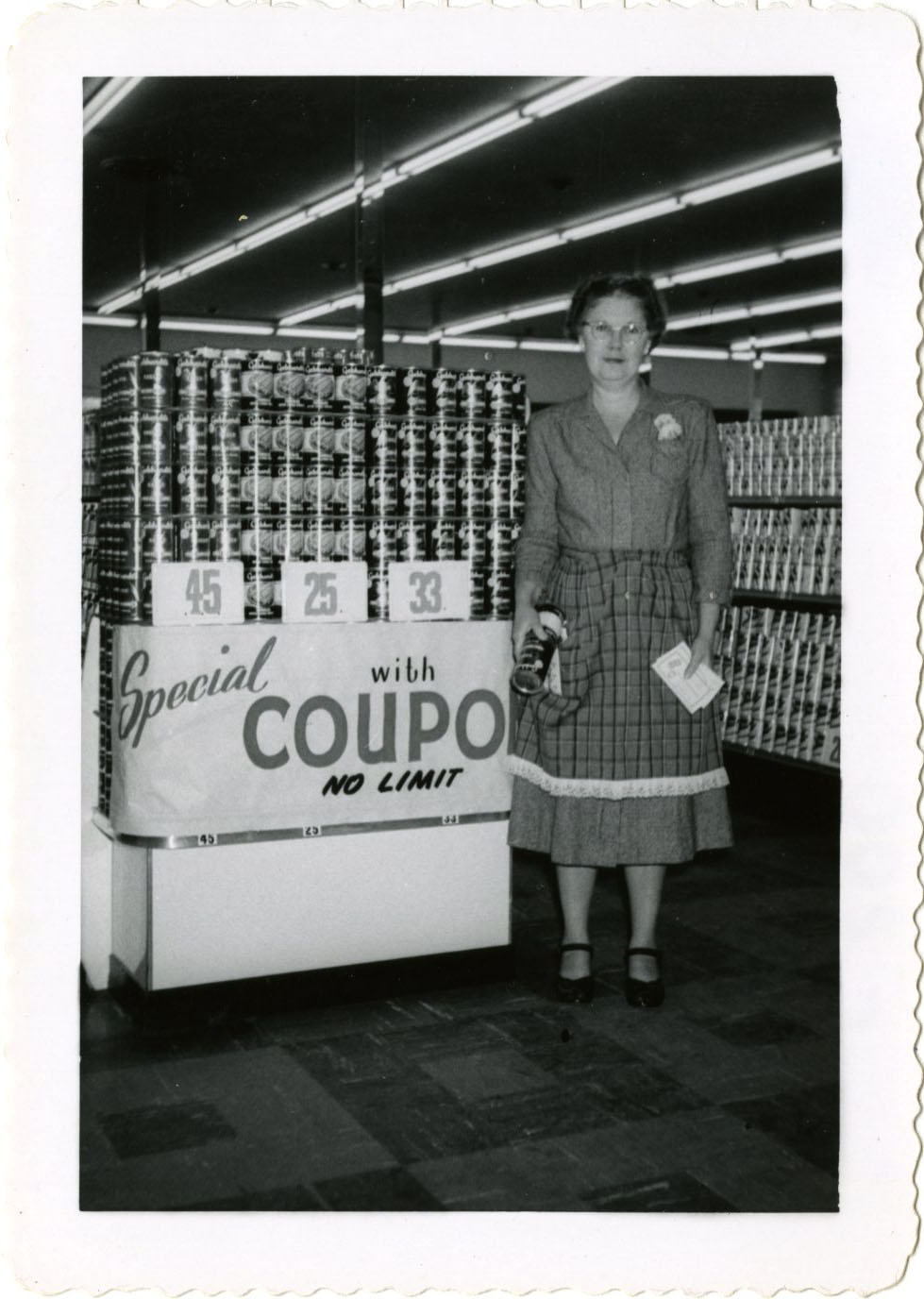
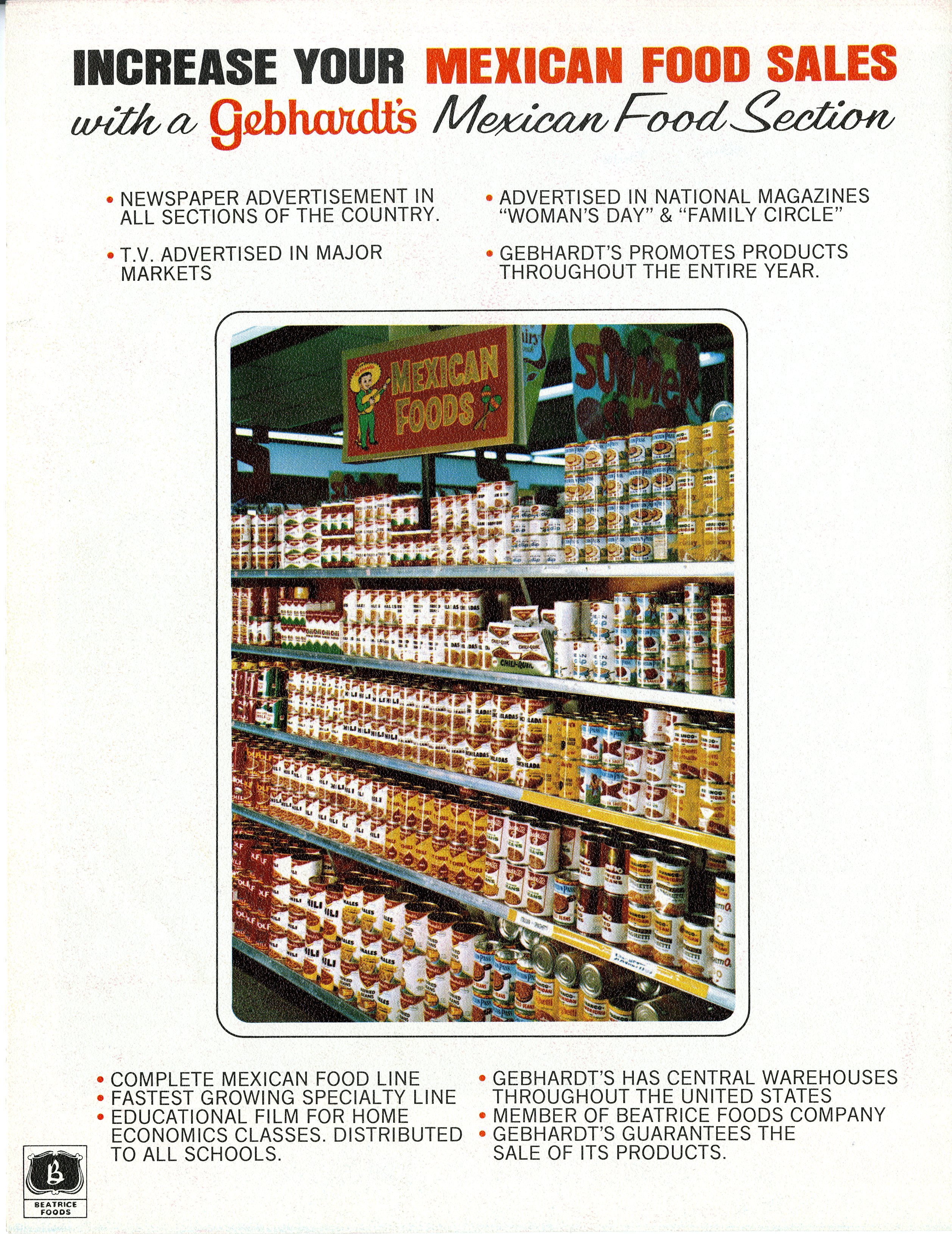
I loved their chili meat spread. Mixed it with a scrambled egg and ate [it in] a sandwich, hot or cold. I’d love to find a recipe for it. I haven’t seen any since the mid 1980s."- Claudia Pugh (comment on a La Cocina Histórica blog post in May 2012)
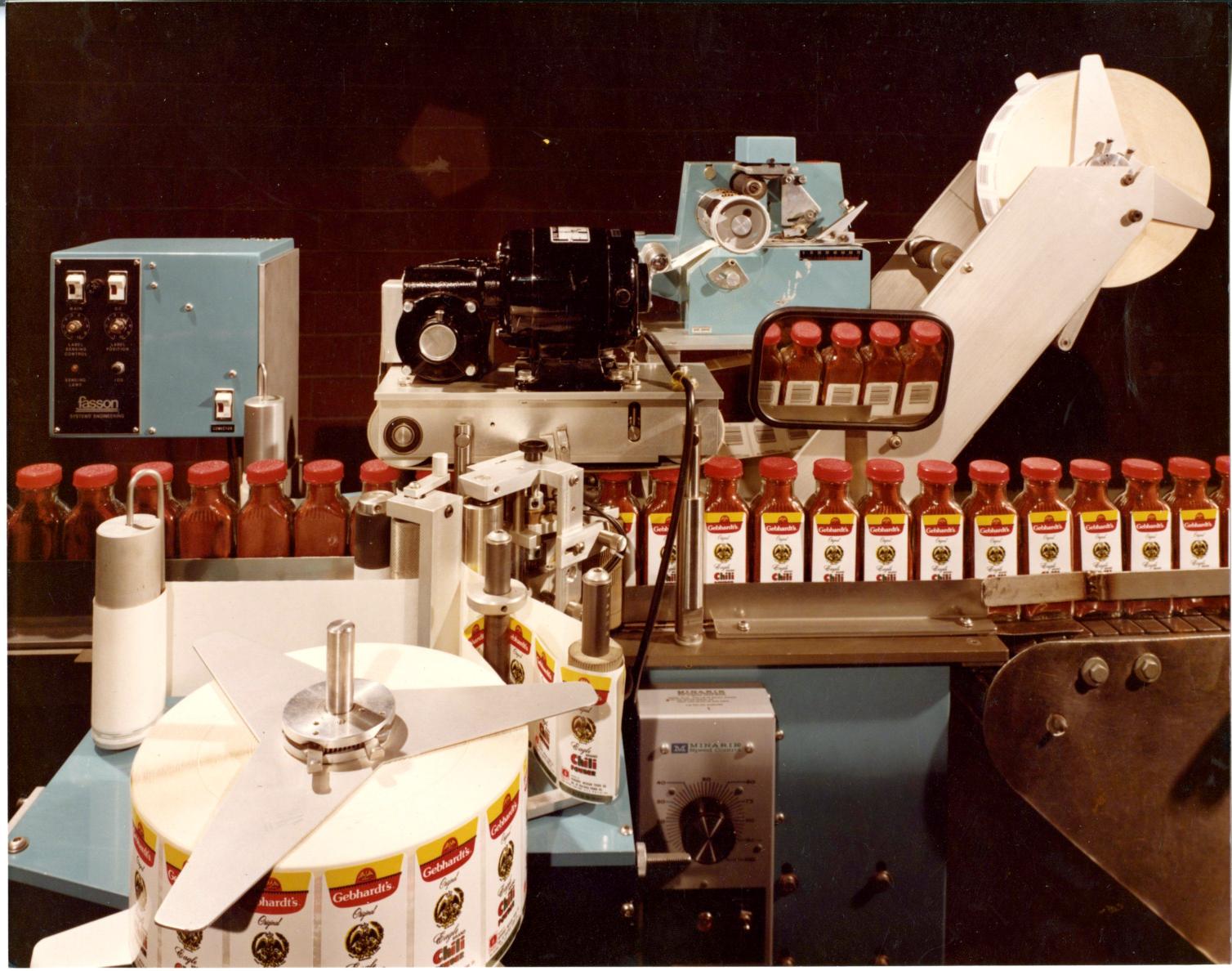
Family Tradition
Our mother used a lot in her cooking when we were growing up in South Texas, and it just made everything taste so good.
– Jose Rodriguez (comment on a La Cocina Histórica blog post in July 2012)Acknowledgements
This exhibit features images from Special Collections at the University of Texas at San Antonio Libraries. Most images are from the Gebhardt Mexican Foods Company Records, dating from 1896-1988. Select images are from the San Antonio Light and General Photograph Collections collected by the Institute of Texan Cultures, UTSA's cultural heritage museum.
Visit the exhibit’s citations page for more detailed information regarding the images and sources used to create this exhibit. Some images in this exhibit may appear partially hidden in order to render appropriately in the site’s design. To see full-scale images, follow the links in the citations page.
The UTSA Libraries would like to thank the following individuals who made this exhibit come to life:
- Research and Content
- Juli McLoone, Rare Books Librarian
- Design
- George Marez, Web Designer/Developer
- Development
- George Marez, Web Designer/Developer
- Bonny Woods, Web Specialist
- Writing
- Stephanie Sanchez, former Senior Communications Specialist
- Juli McLoone, Rare Books Librarian
- Translation
- Maya Guirao
- Additional Research
- Rita Wilson, Government Documents Coordinator
- Nikki Thomas, Manuscripts Curator
- Administrative Leadership and Support
- Mark Shelstad, former Head of Special Collections
- Anne Peters, Director of Library Communications
We’d love to hear your comments! Sign our virtual guest book.
